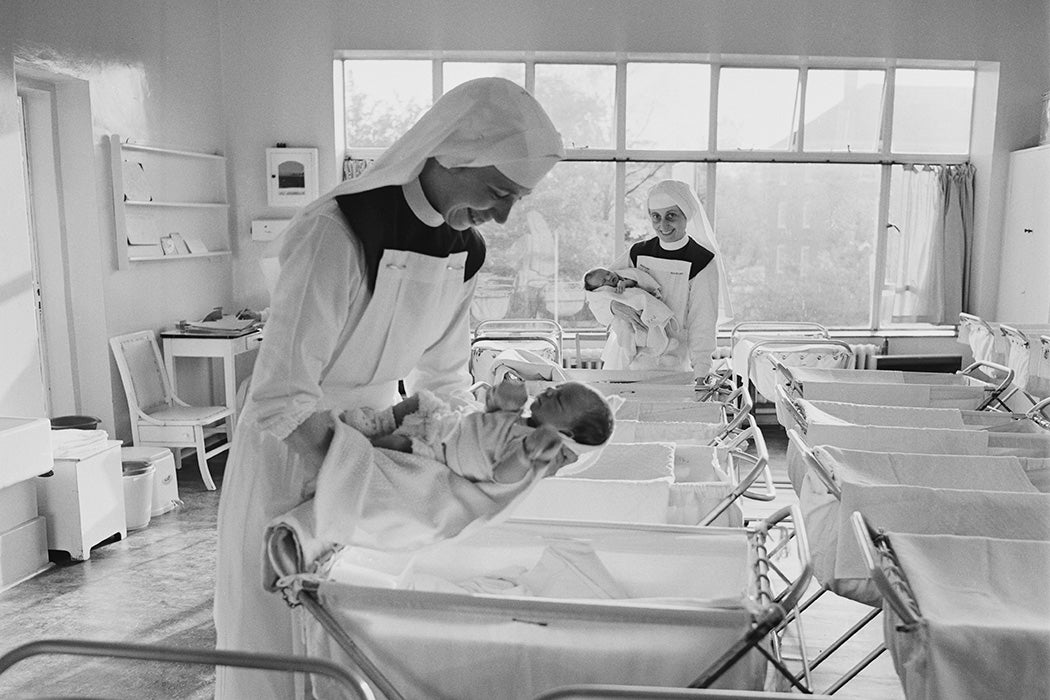“It’s better that I bear the grief and the mark instead of the child.”
“A boy wants to marry me, but I will not do it.”
“I have two years left as a teen-ager, and I want to go out and have fun.”
In the 1960s, a group of unwed mothers wrestled with their decisions to give birth in secret at St. Paul, Minnesota’s Booth Memorial Hospital. With the help of a cache of revealing interviews, historian Kim Heikkila tells their stories and sheds light on the consequences of the mid-twentieth century’s crushing sexual double standard.
Heikkila came to the story through her own experience: In 1961, her mother, Sharon Lee Moore, gave birth to a daughter at Booth Memorial at age twenty-one and placed the child for adoption. She kept the adoption secret for over thirty years and reunited with her daughter in 1994, when Heikkila learned she had a sister.
Booth Memorial was just one of hundreds of maternity homes throughout the United States. Abortion was illegal and sex education scant, and social pressure and biases against “illegitimate” children drove women to the homes. There they were cared for throughout their pregnancies and delivered their babies. Between 1952 and 1956 alone, an estimated 1.5 million babies were placed for adoption in the United States.
Heikkila uses Booth Memorial as a lens through which to view the larger phenomenon of unwed mothers’ homes and the secretive adoptions that resulted. With the help of a set of 1963 interviews with the hospital’s patients conducted by groundbreaking University of Minnesota social work professor Gisela Konopka, she paints a picture of desperation, shame, and resolve.
Pregnancy was referred to as being “in trouble,” and the women “felt they had no other choice,” Heikkila writes. Though the interviews show women who ultimately chose to surrender their children, their deliberations were “painful” and made “in an atmosphere that encouraged relinquishment.”
In its promotional materials, the hospital boasted of a chance for relaxation, “spiritual renewal,” and “a good beginning” for the children. Those women who agreed to give up their children received better treatment than those who didn’t. Most of the women planned to return to their communities without revealing the existence of the child. They faced intense pressure to protect their families and their own reputations from the knowledge that they had given birth out of wedlock.
Weekly Newseletter
The young women at the hospital had different plans for their lives, and their children’s, than the ones their pregnancies seemingly doomed them to. “Booth girls wanted to attend college, get jobs, marry, and become mothers in stable families—prospects that an illicit pregnancy threatened to derail,” Heikkila writes. They also wanted to protect their babies by making sure they grew up in supportive families where they were wanted.
Today, open adoptions are much more common. But the pain and shame of secret pregnancies and relinquishments still echo through the personal stories of mothers and adoptees.







